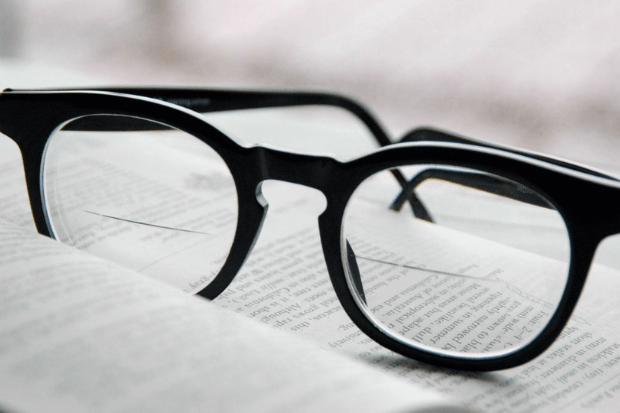Where Should the Bifocal Line Be on Eyeglasses

Benjamin Franklin has been credited with the invention of the bifocal as far back as 1779. Though he did not invent glasses, he was the first to use a combination of multiple lens powers to see things at different distances. John Isaac Hawkins, the inventor of the trifocal, coined the term bifocal and attributed it to Benjamin Franklin. Historically, bifocals have been a good solution for patients, over 40 years of age, with presbyopia.
The right place of the line on bifocals
Traditional bifocals have two prescription strengths: distance and near power. The bifocal line divides the two distances. The distance power prescription is above the bifocal line, and the reading power prescription is below it. Lined bifocals do not have an intermediate distance like a no-line bifocal or progressive addition lenses (PAL). The bifocal line is placed at the same level as your lower lid.
The little window at the bottom of the bifocal is the near vision segment. The distance between the bottom lid and the bottom of the frame is called the segment height or segment distance. This measurement is key to correct bifocal placement, and its accuracy is important in order for the spectacle wearer to perform everyday tasks like reading and using a smart mobile device.
Bifocal segments can come in different shapes, including round, rectangular, or executive. A half-moon shape is most common, can be called a flat-top, straight-top, or D-segment, and is available in two different widths, 28 or 35 mm, measured from side to side.
What if you wear bifocals with the wrong line placement

If you were to wear your bifocal line in the wrong place, you may have difficulty seeing in the distance or up close. If your bifocal is too high, the line will interfere with your distance vision. If the bifocal is too low, your eyes will have difficulty reaching the near prescription when reading. In addition, if the line placement is incorrect, your depth perception may be affected, or images may even appear to jump.
What factors determine if your bifocals are fitted correctly
Frame selection, frame fit, and bifocal segment position are important factors to determine if your bifocal is fitted correctly.
Frame Selection
Frame selection is important for your bifocals to fit correctly. Your frame should fit correctly on the face, and your pupils should be centered in the lens. If the height of your frame is short, called the B frame dimension, it may not be possible to put the entire bifocal segment within the lens. Your segment will be cut off at the bottom resulting in a much smaller window for reading. Each frame will fit differently on each patient depending upon the bridge of the nose or the position of their ears. After choosing a frame, make sure there are at least 30 millimeters of frame height available. This will enable the fitting of the entire segment and plenty of room in the lens portion that is underneath the eyelid for your bifocal segment.
Frame Fit
When you try on your frame, make sure the frame is sitting straight and on the part of the nose where it is comfortable for the frame to sit. If the frame is not sitting correctly or is not a good fit for your nose, the segment can be measured incorrectly. Adjusting the nose pads on the frame prior to measuring the segment height is important because nose pad adjustments can affect the bifocal line.
Segment Position
Your bifocal line segment should be placed right at or just a couple of millimeters below your lid line. If your segment height was measured too low or too high, the segment would not be in the correct spot for efficient use.
Tips for adapting to the line quickly
- When you first receive your glasses, wear them all the time for the first two weeks for easy adaptation.
- If using a lined bifocal, the top of the lens should be used for distance and the bottom for reading, looking at your phone, or a menu.
- Adjust your computer(s) so that you are viewing the desktop computer through the top of the bifocal and a laptop through the bottom.
- Take it slow. Your depth perception may be off in the beginning, so be more careful when taking the stairs or backing your car out of the driveway.
- Do not switch between your old and new pair of glasses because it makes adaptation to the new glasses lenses more difficult.
Conclusion
Determining where the bifocal line should be on eyeglasses is quite simple with good frame selection and frame fit. After placing the frame on the nose, measure the distance between the bottom lid to the bottom of the frame to determine your segment height. This number will be needed when you order your lined bifocals at Overnight Glasses. It is to be expected that a new pair of glasses will require a little adaptation of the brain and the eyes. If you follow the above tips, adaptation to your new lenses will be much quicker and easier!
